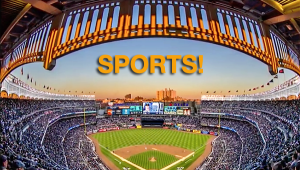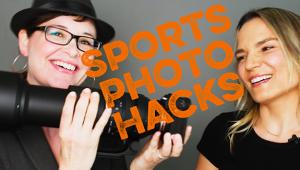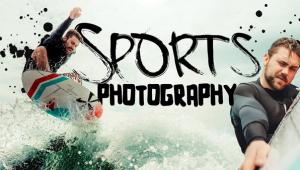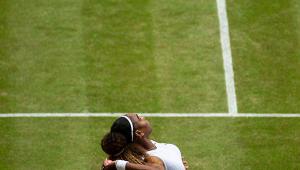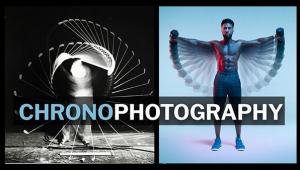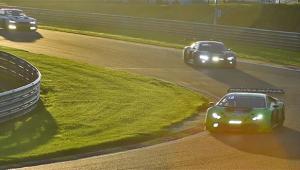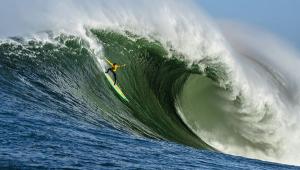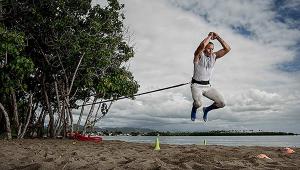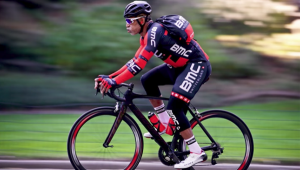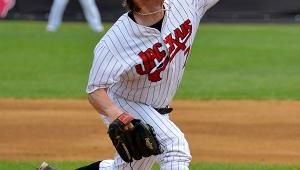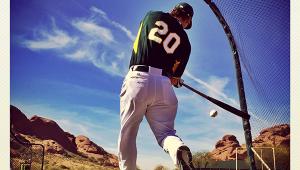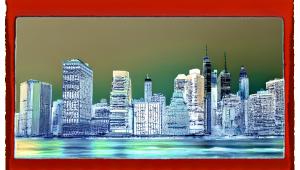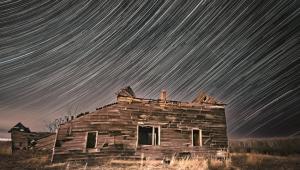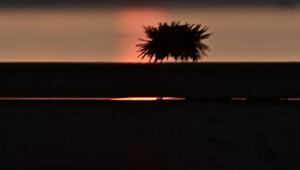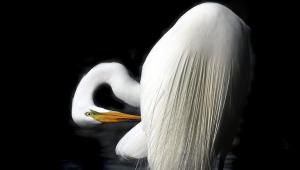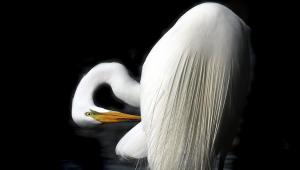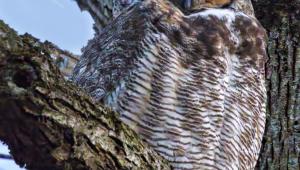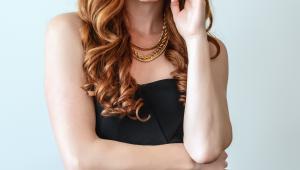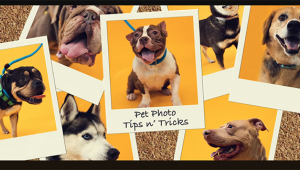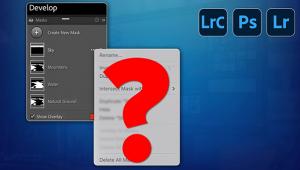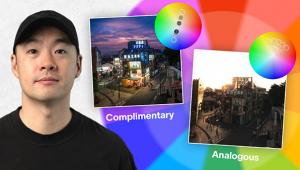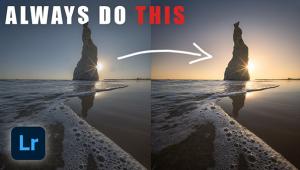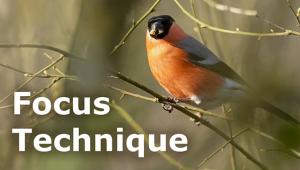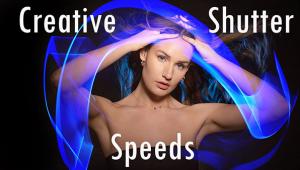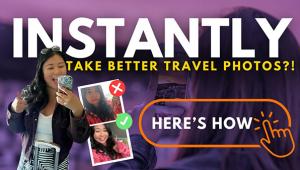How to Become a Professional Sports Photographer: Tips and Advice from Pro Shooters
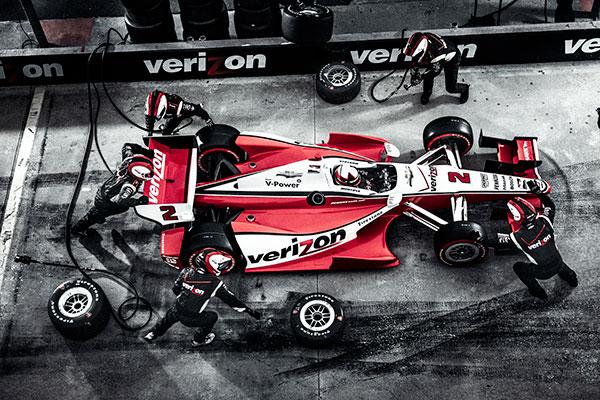
A graduate from the Rochester Institute of Technology (RIT) with a degree in commercial photography, Andy Batt is an accomplished photographer and photo educator. The Portland, Oregon-based Batt is well known for his sports photography and his expert ability to create beautifully lit, high-intensity action shots that capture moments of peak performance.
Therese Gietler, also an RIT graduate, is co-owner of Batt’s studio as well as studio manager and produces all of their still and motion projects. Because of her love of producing, not to mention her expertise and experience, Gietler recently started a consulting service on Instagram, @askaproducer.
We recently spoke with both Batt and Gietler about their experiences and how they think photographers can get into the sports and action photography market.
Shutterbug: What types of clients have you found to license or buy sports and action photography?
Therese Gietler: The types of clients span all brands and because sports marketing is such a huge business, sports sponsorship is on the rise. Obvious brands like Nike and Under Armour, but also brands that sponsor athletes. Everyone wants to sponsor athletes and therefore have a need for photography. Interestingly, we are asked to photograph athletes holding product far more frequently than in action. We always leave time for at least some action, but it seems to be given less priority when there is a time crunch. And there is always a time crunch.
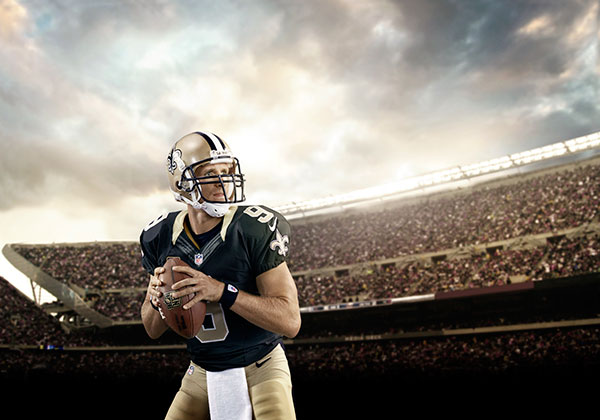
SB: What percentage is stock versus assignment?
Therese Gietler: Almost 100 percent assignment since most of the athletes don’t sign releases and the brands don’t even allow us to ask. Most of the fitness models we work with are represented by their agencies.
Andy Batt: Stock is difficult these days. There are so many negatives that it feels like there’s no positive balance. Mega companies (like Getty) have devalued the valuation of a photograph. They have literally set the value at zero dollars in an effort to spread their brand around.
The few stock requests that we can fill are for editorial. We do get requests for commercial stock, but those are difficult to fill: everyone wants images that feature represented talent, which makes licensing very difficult. To shoot my style of work for stock, it takes the same effort that goes into making a successful assignment photo: finding the talent, sourcing all the props, wardrobe, locations, production, and retouching. The value of the resulting image—the actual dollar amount on offer—is so low that it would take years to recover the investment, let alone turn a profit. There’s just no incentive.
SB: What have been your most effective marketing tools?
Therese Gietler: A healthy mix has been most effective. We maintain an updated website along with portfolios on portal sites like Found Artists and ASMP’s Find a Photographer, send direct mail, send both e-mail campaigns and direct, personal e-mails. We show the portfolio extensively both locally and nationally. We maintain very active social media on Instagram, Twitter, and Facebook. I’d say we get the most feedback on Instagram; I see a lot of linking to our website from Instagram as well.
Andy Batt: Instagram transitioned from being a social tool for shared photography into a marketing tool for image-based messaging, so we’ve been using it a lot more this past year. We’ve taken advantage of it to showcase our portfolio and give our audience some insight into how we work. Our website and SEO are also incredibly important—being findable is still the most important thing.
SB: What are the marketing changes in this field you have seen in the last five years?
Therese Gietler: I have seen the rise and importance of social media and e-mail campaigns becoming less and less effective.
Andy Batt: The basics never change: repetition and multiple points of contact, crafting a significant marketing message, finding an alignment with what I do to what “they” want, editing a portfolio and website that speaks to the clients we’re going after. What has changed is how the contact is being made, and who we are marketing to. Many agency people have become harder to reach: no voicemail, no physical mail (or a mailbox that’s checked once a month), a dislike of automated e-mail marketing, and a reluctance to respond to cold contact direct e-mails. It’s a world where “we’ll call you” has been taken to an unhappy extreme.
Also, the “who” is shifting as we speak: art directors and creative directors from ad agencies are moving to in-house corporate teams and social media agencies are often only working with their in-house photo studios. Many ad agencies are stuck doing takedown work, i.e., they’re not commissioning photography and instead are using crowd-sourced work, royalty-free stock, or imagery provided by the client. We’re still looking for the new marketing model. It’s all in transition right now.
SB: How has @askaproducer helped you be more efficient in your photo shoots?
Andy Batt: The best thing a photographer can have on a shoot is an experienced producer. You can make do with an older camera, an average lens, fewer lights than you’d like, and some janky light stands, but you need a producer who knows what they are doing. What Therese (@askaproducer) really does is take care of the other parts of the job so I can concentrate on photography—on the thing that I’m being hired for. A talented and experienced producer like Therese saves time and money! Our shoots run more efficiently, we rarely have cost overruns, and we stay on schedule.
We did a campaign last fall that was one of those Herculean projects—a giant shot list that included video vignettes, and three days to accomplish it (it could have easily been a five- to six-day shoot). With Therese producing, I had an exact timeline and schedule. So much of a successful shoot lies in preproduction and that’s where a talented producer really shines. Talent schedules need to be coordinated with the vanities team and the shoot schedule so that we’re never waiting on camera-ready talent.
The tech scouts are incredibly important: they help me pre-visualize the shoot day, but it’s also the nuts and bolts of production seen through the eyes of the producer. Things like where does everyone park, where does the client’s motorhome go, how do we get access to this door, where’s the nearest bathroom—all the key details. It’s incredibly important to make sure the crew is taken care of.
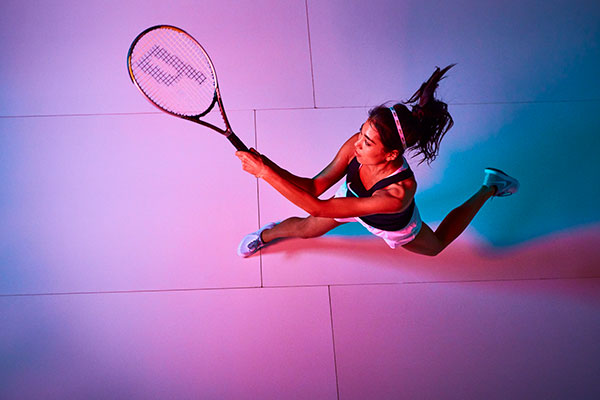
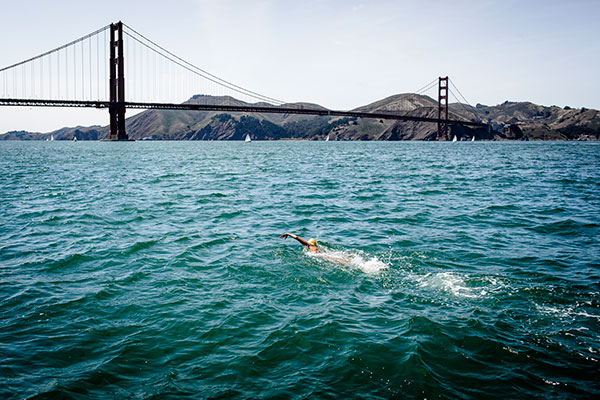
SB: What would you recommend to a photographer looking to enter the sports and action photography field?
Therese Gietler: You need to find a way to stay lean and mean at all times, the fat in this business is gone. Take your social media very seriously. Start your database now, keep meticulous notes on people, and, most importantly, be nice.
Andy Batt: That’s tough, the world of commercial sports photography is under a huge shake-up right now; with any big change, there’s always opportunity if you know how to find it. So I guess it’s still the classic advice about doing a lot of research to identify where your potential clients are, what they need, and how to align what you can offer them. I’d also say to be very mindful about anyone telling you that “you are too expensive” since your pricing always reflects on your cost of doing business. You need to cover your current overhead, pay yourself a salary, and plan for growth. If you aren’t consistently hitting that number, you aren’t charging correctly, no matter what you’re being told.
SB: What was the best photo assignment you have had in this field?
Andy Batt: For me the definition of best has both great images and a great experience making them. I’ve got two favorite assignments. I shot a two-year campaign for Verizon IndyCar a few years back. I was given a wide-ranging assignment of capturing cars speeding around the track, overhead drone shots, a dynamic overhead shot of a race-quality pit stop, an “Apollo 13” dramatic poster of the drivers plus crew, candid portraits of the drivers, poster shots of the drivers with the race car, and PR portraits. It was such a great experience to have a project that combined my love of technical camerawork, dramatic lighting, professional athletes, and portraits—all to tell a visual story about IndyCar in a way that was unique and exciting to the race fan.
The other shoot that is always at the top was one I did in San Francisco for Outside magazine, photographing Laurin Weisenthal (now Weisenthal Cristiano) as she was training for her English Channel swim. I got a solid set of portraits on the beach, as per the assignment. I was fortunate to have an editor at Outside who was interested in pushing past that, so Therese found us a picture boat piloted by an experienced film/photo captain. We motored out into the San Francisco Bay, with a beautiful view of the Golden Gate Bridge, and got some great shots of Laurin swimming in this huge body of water, framed by the bay and the bridge.
After we covered that a few ways, Laurin asked if there was anything else we needed. She looked so content and happy in the cold, choppy water that I asked her to just back float, which she did with a beatific smile on her face. It was one of those amazing moments when you know it’s all come together—the light, the subject, the place—to create something far cooler than the sum of its parts. You just hope that you’ve nailed the shot technically because everything else is so great.
Resources
Andy Batt: andybatt.com
Therese Gietler: instagram.com/askaproducer
- Log in or register to post comments

